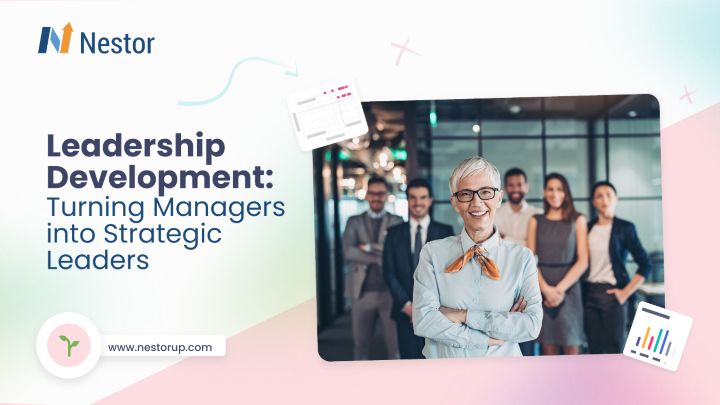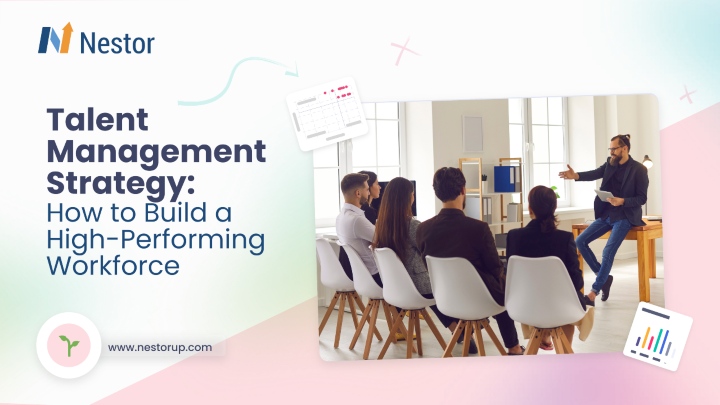Employee Growth Opportunities: Drive Success beyond Traditional Training
8 min read

Providing employee growth opportunities and expanding the skill set of your workforce can be one of the most impactful initiatives within your organization. Not only does it address a number of critical pain points but also drives higher engagement and commitment:
- Improves talent retention: According to LinkedIn’s Workplace Learning Report, “Three of the top five factors that drive people to pursue new jobs reflect their desire to stretch, grow, and develop new skills.” Therefore, one of the best ways to boost retention is to provide these opportunities internally.
- Bridges skill shortages and gaps: As pointed out by recent insights from McKinsey, “Only 50% of the respondents say their organizations already have the capabilities they need.” Customized development opportunities that match one’s needs can be the answer in these situations.
Now, having established the importance of employee growth opportunities, let’s take a closer look at each type and see what HR and people managers should do to ensure the success of these initiatives.
Types of employee growth opportunities
Before going through our list, it’s important to keep in mind that these opportunities should enable all types of career growth.
While vertical paths or progression used to be the norm, things have changed nowadays. Lateral or even cross-departmental moves are more common and companies need to accommodate or at the very least consider this wider range of employee (career) expectations.
Online webinars and courses
These types of virtual resources come with great flexibility. With many materials being pre-recorded or archived, employees are able to access them whenever it’s best for their schedule and rewatch the same course or class multiple times.
These solutions are also ideal for companies, that can provide scalable learning programs while making the most out of the available, and sometimes limited, (financial) resources.
Workshops
The effectiveness of workshops is given by their interactive nature, which applies to all activities: presentations, discussions, group exercises, etc. They can be delivered and coordinated by both internal and external experts and usually target the needs of a specific team or department.
Often split into multiple sessions, workshops also represent a great opportunity for (cross-departmental) networking and enhanced collaboration.
Learning in the flow of work
When it comes down to learning, few things can beat hands-on experience and practical insights from trial and error. Even in our modern tech-driven workplace, this still applies.
Whether it’s a new tool, process, or assignment, encouraging people to get involved and learn as they do will yield excellent results. It will also enable them to progress at their own pace and acquire applicable knowledge, which is relevant to their immediate needs.
Traditional training
Unlike experiential learning, traditional training is a more structured approach that relies on direct instruction. It takes various forms, from workshops to subject-specific sessions.
Traditional training can also include tests or quizzes, with the aim of evaluating the employee’s understanding of the newly introduced concepts and materials. The onboarding process, for example, can be considered part of traditional training.
Coaching and mentoring
What sets coaching and mentoring apart from other employee growth opportunities is their personalized nature, which relies on one-on-one sessions and interactions.
Coaching is (usually) a short-term initiative, aiming to improve specific skills and help an employee perform better and advance in their career. It can be done by more experienced colleagues or by external coaches and companies.
Mentorship, on the other hand, is a long-term arrangement. It seeks to help the mentee (a person with less experience) develop in a more holistic way, one that goes beyond skills and targets personal traits and career guidance. The mentor providing the advice is a senior employee within the organization, mentorship being often associated with succession planning and the development of future leaders.
Leadership development programs
All leadership development programs have the same objective: equipping people with the leadership skills and traits they need to guide and motivate teams toward achieving organizational goals.
The participants represent the main variable:
- either existing leaders within the organization, who seek to improve their abilities
- or potential leaders, often top performers, who seek to start developing the leadership qualities (e.g., strategic thinking, decision-making, conflict resolution) needed for future managerial roles
To be effective, leadership development programs work best with small(er) groups of people, led by highly experienced instructors. These programs incorporate all types of activities, including case studies, roleplay scenarios, and practical workshops.
Job shadowing
Like other items on our list, job shadowing falls into the category of experiential learning. It offers aspiring employees a firsthand understanding of another role, allowing them to gain deeper insights into the day-to-day tasks and responsibilities associated with it.
It’s also a unique opportunity to observe how theory is applied in a real workplace setting, and what is really needed to achieve long-term success in that role.
Job rotation
Job rotation is all about moving employees across different roles or departments for a short period of time. Through this, companies seek to help their workforce become more agile and develop a wider range of skills.
Thanks to job rotation, people also broaden their understanding of how each department works and the role it plays in the overall business success, which leads to improved cross-functional collaboration.
It’s not uncommon for workers to discover hidden interests (or skills) during rotations, which can open up new career paths for them and provide organizations with additional options for career development.
Stretch assignments
It’s true that stretch assignments aren’t employee growth opportunities per se. Still, they push people beyond their current level of expertise. It’s about going outside the comfort zone and using new skills and creative ways to solve challenges that aren’t part of regular tasks.
Based on how employees respond to stretch assignments, HR and managers can decide whether someone is ready for higher-level positions or needs additional training and time to grow.
Offering tuition or education cost reimbursement
Formal education can also contribute to employee development, and companies that recognize this fact offer incentives or partial/full tuition reimbursement to their workers. Here are a few examples:
- Amazon funds “full college tuition, as well as high school diplomas, GEDs, and English as a Second Language (ESL) proficiency certifications for its front-line employees.”
- Ford offers up to $6,000 in tuition assistance annually to its full-time employees.
- Disney will pay “100% tuition up front for a range of program types from high school completion, English language learning, college prep, and undergraduate and Master’s degrees.”
Only 26% of employees say their organization challenged them to learn a new skill.
— LinkedIn Workplace Learning Report
How to enable growth opportunities in your organization
- Use skills to align business needs with individual aspirations: Adopting a skills-based approach to talent development will help you quickly identify areas where employee improvement is needed (skill gaps or underperformance) and select growth opportunities that are in line with current and future business objectives.
- Provide personalized L&D programs: Once gaps or growth opportunities are outlined, L&D specialists and managers can evaluate and narrow down the best-fit opportunities for each department, team, or individual. The key is to transform learning into a more targeted process and focus on specific and achievable outcomes instead of ambitious but vague goals.
- Take advantage of internal talent marketplaces: Thanks to a talent marketplace, you can democratize the talent development process. It’s a platform that brings in one place all internal growth opportunities, including open roles, and allows everyone quick and easy access to them.
- Embrace career pathing and plans: Despite its significance, many organizations still overlook or underestimate career pathing. This is also reflected by data revealing that only 14% of employees say their organization encouraged them to build a career development plan. When such plans are in place, employees will not only grow but will also perform better and be more likely to extend their tenure.
- Adopt non-linear career paths: Directly related to the previous point, non-linear or dynamic career paths are all about encouraging and facilitating lateral and cross-departmental moves, in addition to the traditional vertical ones.
- Make ongoing learning part of your culture: When you transform learning into a continuous and organization-wide process, it becomes almost automatic, in a way. Experiential learning suddenly emerges as one of the strongest drivers of (skill) development within the organization and collaboration reaches a whole new level — all while creating an atmosphere in which everyone feels safe to explore and learn from their mistakes.
- Take work-life balance seriously: Adding training to already busy schedules can often lead to undesirable results. This is why you need to think strategically and find ways to integrate new L&D initiatives without exhausting employees or increasing the risk of burnout — both significant challenges nowadays, especially after the ongoing changes over the last few years.
- Offer rich and insightful feedback regularly: During these sessions, you need to focus on understanding how people are progressing with their development plans, if the opportunities chosen initially are still a good fit, and whether additional resources or support is needed to drive their growth even further.
Final thoughts
Embracing employee growth opportunities is not only a stepping stone toward a thriving workplace but also a strategic investment in the long-term stability and success of modern companies. Thanks to these opportunities, employees can reach their potential and take full advantage of their skill set, all while remaining relevant and valuable assets.
A People Intelligence Platform, like Nestor, is the best place to identify the best-fit development needs for each employee. Nestor helps organizations track and assess employee skills and identify gaps and areas that need improvement. Then, with the help of an internal talent and opportunity marketplace, Nestor helps employees discover development opportunities that match their unique skills, needs, and career aspirations.








